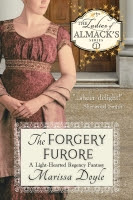The British Museum has hundreds of examples of Roman
artifacts, and many of them weren’t gathered on foreign shores. Romans occupied
England, Wales, and a portion of Scotland from 43 to 410 AD. And some of the
early archaeological evidence was uncovered in the 18th and 19th
centuries.
Make no mistake. Roman forts had been incorporated into cities
and towns by the Regency period. The city walls of Chichester in southwest
England were largely Roman. Other forts had been dismantled, the stones being
used to build more modern edifices. For example, the Maglona Fort in Cumbria
was stripped to rebuild the town of Wigton.
From 1731 to 1796, however, farmers, workers, and
antiquaries (the closest Regency equivalent to an archaeologist) stumbled
across a number of “hoards”—caches of Roman goods left buried. In 1796, a boy
discovered one of the most significant hoards of the day while digging in a
hollow near a river north of Manchester. Among the finds were a decorative
helmet (see above), several shallow ceramic or metal bowls, a broken vase, and a bust of
Minerva. The boy took the treasure to his father, who fortunately recognized its
potential worth. Or rather, who might care about them. He took them to Charles
Townley at nearby Towneley Park.
Charles Townley was a member of the Society of Antiquaries,
that collection of gentlemen devoted to the “encouragement, advancement, and
furtherance of the study and knowledge of the antiquities” of England and other
countries. Antiquaries differed from historians in that antiquaries tended to
study things while historians preferred texts. Distinguished lords held the
presidency from 1810 to 1846, among them the Marquess of Townshend, Sir Henry
Englefield, and the Earl of Aberdeen. I made my hero in Never Marry a Marquess (June 2019) such a devoted antiquarian.
Townley was definitely devoted. He was so enamored of these particular artifacts that
he penned an article for the society’s journal, describing each find in detail. He also had legendary artist Johan Zoffany paint him with his entire collection. When he passed away in 1805, the cousin who inherited eventually sold that collection to the British Museum.
1811 saw another notable discovery, near the coal mining
town of Backworth on the northeast coast near Newcastle, not far from Hadrian’s
Wall. This hoard included two silver skillets, silver spoons, brooches, silver
and gold rings, a bracelet, gold chains, and hundreds of Roman coins. Little is
known about the one who discovered it, but it came into the possession of J.
Brumell through a Newcastle silversmith. J. Brumell was also a known collector
of antiquities. When he died in 1850, his collection was given to the British
Museum.
The trend didn’t stop in the nineteenth century, however.
Roman hoards were discovered as recently as 2017 in Cornwall and Gloucestershire.
Seems it pays to rome about. 😊







No comments:
Post a Comment